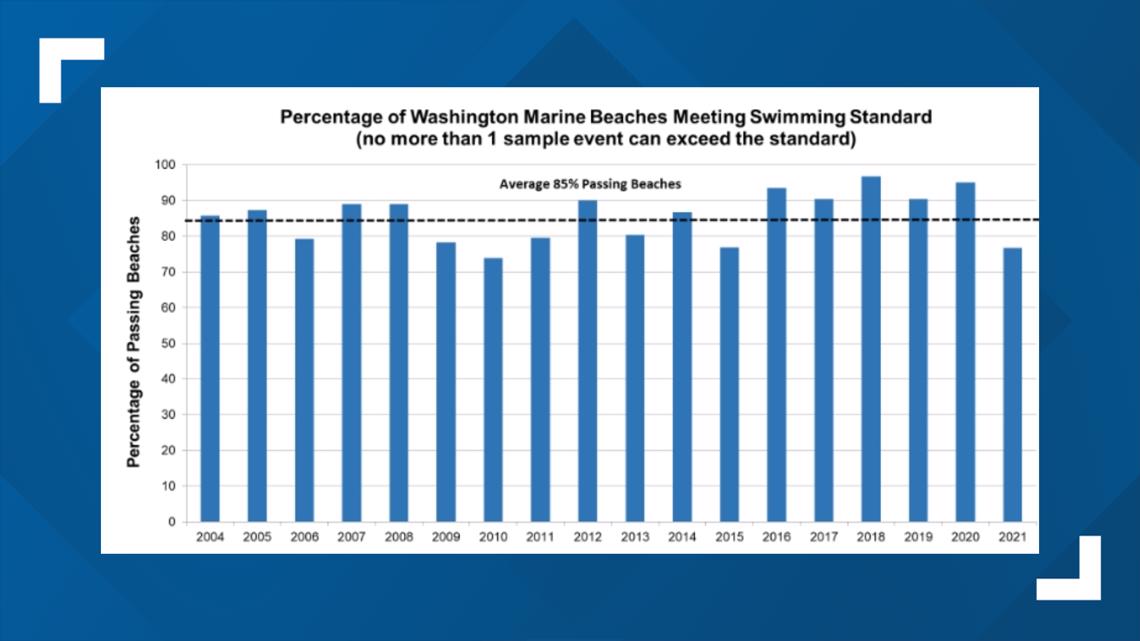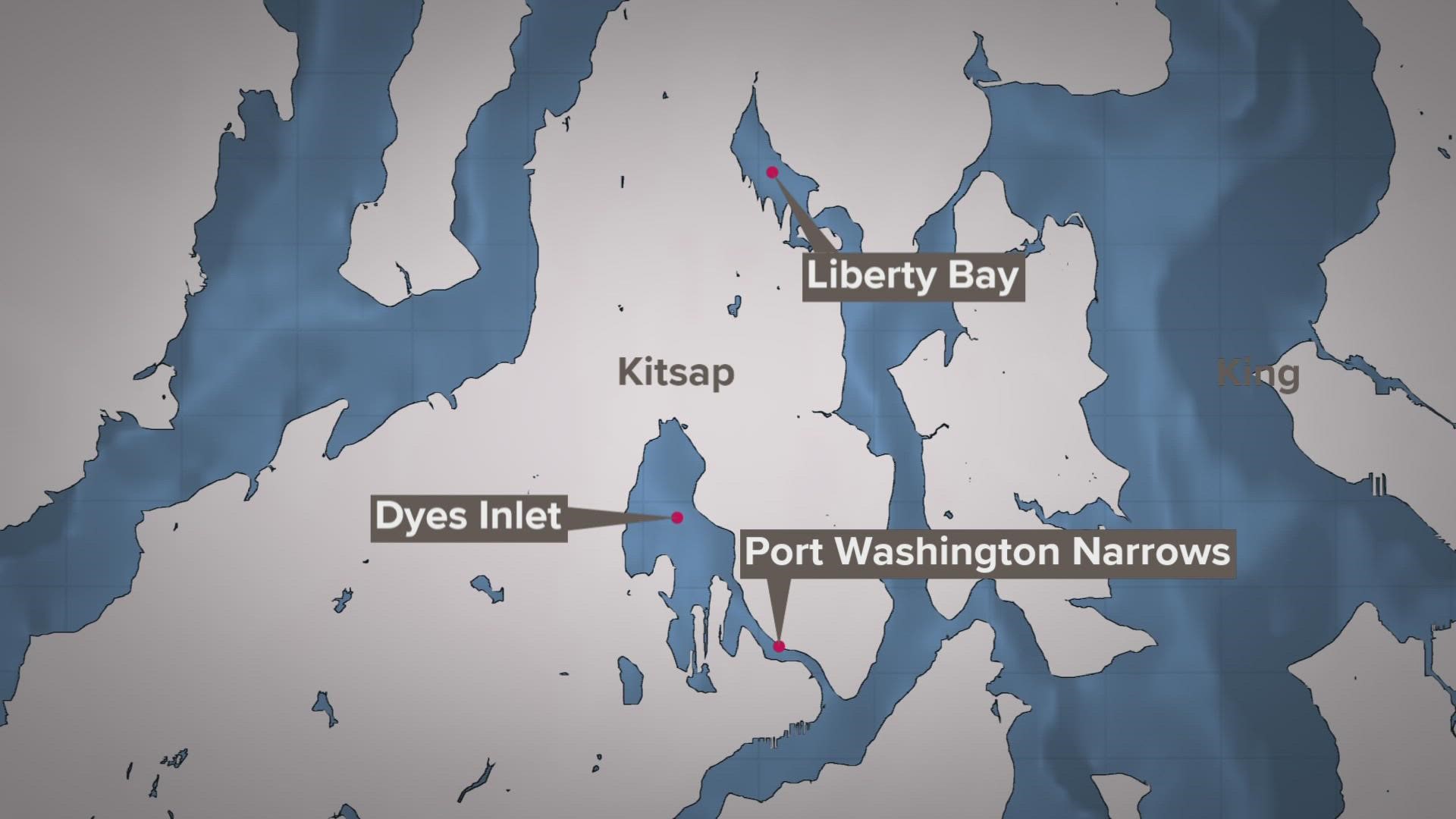KITSAP COUNTY, Wash — County health officials issued a no-contact advisory for the public through Thursday for Dyes Inlet and Port Washington Narrows due to a sewage spill in the area.
The Kitsap Public Health District said the public is advised to avoid all contact with water in the affected area during the advisory.
Health officials said contact with fecal-contaminated waters can result in gastroenteritis, skin rashes, upper respiratory infections and other illnesses. The most vulnerable to waterborne illnesses are children and immunocompromised people.
There are signs posted at public access points, including Lions Field and Silverdale Waterfront Park.
The no-contact advisory has been in place since May 13 when Bremerton Public Works reported a sewage spill of about 1,500 gallons.
Health officials caution against swimming, wading or any recreational activity that could cause water to be swallowed or get in to the nose or eyes. The public should avoid direct skin contact if possible and immediately wash with soap and clean water if they have exposure to the water, according to county health officials.


The BEACH program
The Washington State Department of Ecology's Beach Environment Assessment, Communication and Health (BEACH) program monitors the safety of saltwater swimming beaches in Washington state from Memorial Day to Labor Day.
The water samples are collected from high-use beaches weekly or bi-weekly to test for enterococcus, a type of fecal bacteria linked to swimmer illness. Beaches are considered high risk for contamination when they are close to outflows, marinas or sewage treatment plants.
From there, local health departments can issue water contact advisories or closures at swimming beaches, while the BEACH program focuses on communicating risk to the public and educating people on how to avoid getting sick from playing in the water.
A beach passes when it has one or fewer sampling events that exceeds the swimming standard. To see how your local beach fared and how it compared to previous years, click here.
Out of the 60 beaches sampled in 2021, the BEACH program said 77 percent were considered "passing," which is a 18% decrease from 2020.
This standard is well below the yearly average (2004-2020) of 85% passing beaches, according to data from the BEACH program.



